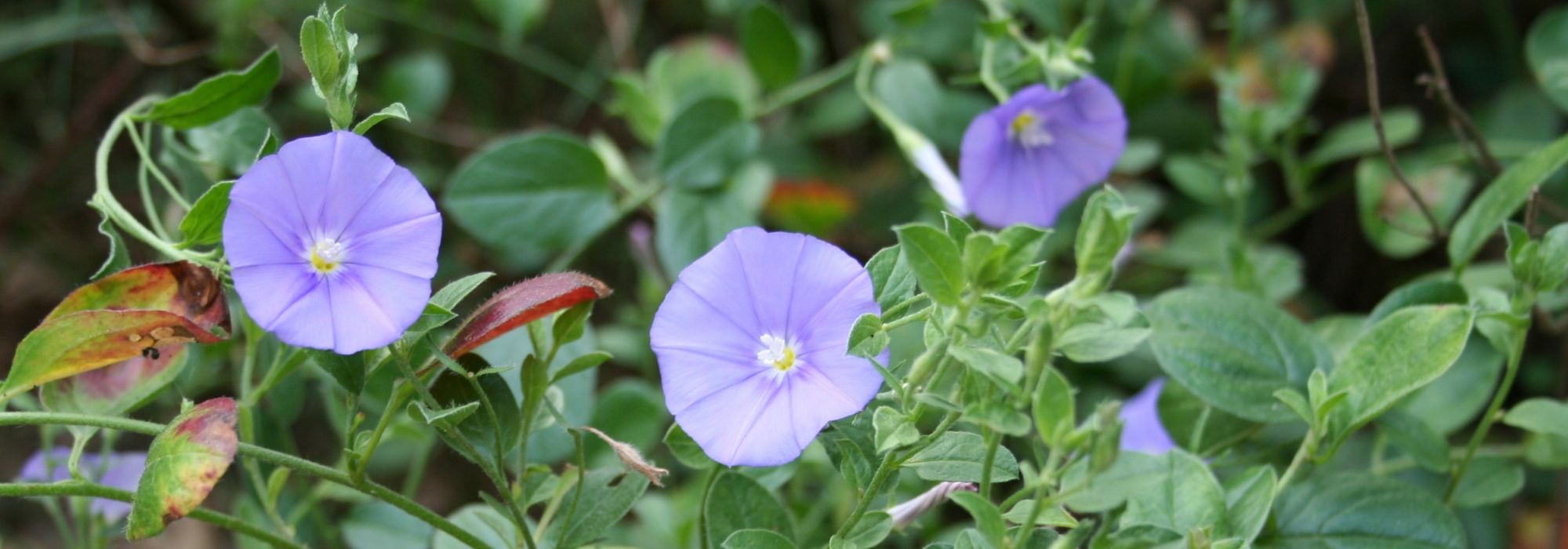
Convolvulus, Turkish Convolvulus: sow, plant, care for
Summary
Convolvulus in a nutshell
- Convolvulus offers an endless flowering of trumpet-shaped blue, pink or white blooms from May to October
- Unlike hedge bindweed, it is not invasive
- Floriferous, easy and low-maintenance, it only requires a warm position and well-drained soil to thrive
- Except for Convolvulus cneorum, they are not very hardy in our climates and are cultivated as annuals, as with Convolvulus tricolor
- It is an excellent plant for dry rockeries and seaside locations, also ideal in hanging baskets
A word from our expert
Bindweed, by its Latin name Convolvulus, provokes in gardeners, at mere mention, an uncontrollable urge to reach for white vinegar or bicarbonate of soda to weed it out! And yet, bindweed is not just a weed people wonder how to get rid of!
Unlike the climbing bindweed of hedges and fields (Calystegia sepium and Convolvulus arvensis), some perennial or annual species are not invasive and deserve to be planted in every garden. Among them: Convolvulus cneorum or Turkish bindweed, a shrub with silvery‑green foliage; Convolvulus sabatius or mauritanicus, two perennial bindweeds capable of withstanding brief frosts; and Convolvulus tricolor, the famous Morning Glory, an annual species. All produce trumpet-shaped flowers throughout summer, from white to indigo blue, passing through pink and red.
Undemanding, it grows in sun, in any good well-drained garden soil, endowed with exceptional flowering that renews abundantly for more than six months, Convolvulus is without doubt one of the best plants to install in a dry garden, whether in pots or in rockeries.
Easy to grow, discover our perennial Convolvulus varieties as well as our unique selection of Morning Glory seeds!
Description and botany
Botanical data sheet
- Latin name Convolvulus
- Family Convolvulaceae
- Common names Bindweed, Morning glory, Turkish bindweed, Mauritanian bindweed
- Flowering April to September
- Height 0.15 to 0.60 m
- Sun exposure sun
- Soil type dry, well-drained
- Hardiness varies according to species
The Convolvulus, commonly called bindweed, is a plant native to rocky areas, arid and stony hills of the Mediterranean basin, particularly Turkey and Egypt. It belongs to the large family Convolvulaceae like Ipomoea and morning glories.
If Convolvulus in Latin means “to wind”, not all bindweed species are therefore twining! The genus comprises about 250 species of herbaceous annuals, perennials and even undershrubs. Alongside wild species regarded as weeds, such as field bindweed (Convolvulus arvensis), false marshmallow bindweed or Provence bindweed (Convolvulus althaeoides) and hedge bindweed (Calystegia sepium) which, when they thrive, can be invasive, creeping or climbing into surrounding plants, there are non-invasive Convolvulus species.
Among the most widespread species are Convolvulus cneorum, silver bindweed or Turkish bindweed, Convolvulus sabatius, Mauritanian bindweed or blue bindweed, which are perennial bindweeds, and Convolvulus tricolor, commonly called morning glory or tricolour bindweed, which is grown as an annual.
Under our climate, depending on species, they are grown as annuals or as tender perennials. Some bindweeds survive our mild winters and are capable of withstanding brief frosts of around −10 to −15°C; morning glory, probably the most tender, is grown as an annual in the coldest parts of the country.
Driven by rapid and vigorous growth, perennial or annual bindweed forms, unlike its relatives the Ipomoeas, a dense, ramified bush with a compact, spreading or trailing habit, reaching 10 to 50 cm in height and up to 80 cm across. The Convolvulus tricolor or morning glory forms a creeping tuft, while Convolvulus sabatius is ideal for hanging baskets.

Convolvulus cneorum – botanical illustration by P.J. Redouté
Its seemingly endless flowering, dotting the foliage, begins in March–April (depending on region) and only ends with first frosts. In leaf axils and at shoot tips appear small clusters of turbinate buds that open into funnel-shaped flowers 2 to 5 cm wide, solitary or grouped in threes or sixes in small cymes. The flowers are plicate into five segments fused at the base to form a little bell enclosed in a villous calyx. They are borne on a very short peduncle and display crenate margins with a silky underside.
These delicate, widely flared trumpet-shaped corollas open in solid or variegated shades. They appear as pretty trumpets: white, sometimes delicately washed with pale pink in Convolvulus cneorum, pastel blue in Convolvulus sabatius or indigo to sky blue, soft pink to mauve, red or white in morning glory. The latter species stands out from its sisters by a often unique pattern with more varied colours arranged in concentric halos of three contrasting colours, hence its name Tricolour bindweed.
The silky texture of bindweed petals sometimes reveals fine veins through the corolla, recalling delicacy of petunia or Ipomoea flowers. The throat enclosing the yellow stamens is highlighted by a small central star-shaped eye that further enlivens the corolla colour.
These fully opened corollas open in the morning and close in a coil at dusk, renewing generously until autumn.
This endless, melliferous flowering attracts a large number of pollinating insects.
Flowers give way to dehiscent, globular capsules containing very small seeds.
Foliage is dense, vigorous, deciduous, evergreen to semi-evergreen according to species and climate. Leaf shape varies by species. Well-ramified shoots carry small petiolate, entire, oblong-lanceolate leaves 3 to 6 cm long in Convolvulus cneorum or Turkish bindweed. This species bears characteristic leaves covered with silvery, shiny hairs and evergreen year-round. Convolvulus althaeoides is characterised by leaves entire at the base, increasingly deeply divided towards stem tips, similar to those of mallows.
Well adapted to Mediterranean climate from which it originates, bindweed shows hardiness that varies according to species.

Some Convolvulus: C. sabatius, C. cneorum and C. tricolor
This dry rockery plant is easy to grow in sun in a light, very well-drained soil, even stony, rocky or sandy, including calcareous soil. In southern regions it will tolerate partial shade. In cold regions it is preferable to grow it in a pot to protect it from frost in winter and put it outside again during the warm season!
Bindweed is ideal in hanging baskets, window boxes or pots, in a mineral garden or seaside garden, in rockeries, as edging, over a low wall or in suspended baskets or large containers from which it will trail in floriferous cascades.
You may also read
Bindweed: how to get rid of it?Main species and varieties
Within the bindweed family, we distinguish :
- wild species, such as field bindweed (Convolvulus arvensis) and hedge bindweed (Calystegia sepium), which are considered weeds because they grow so rapidly they can literally engulf neighbouring plants
- perennial bindweeds such as Convolvulus cneorum or Convolvulus sabatius which are neither invasive nor climbing
- Convolvulus tricolor, an annual species that is more tender
These bindweeds, unlike their wild cousins, have a propensity to form attractive groundcover or to trail elegantly in flowering cascades and are particularly suitable for dry rockeries, pots and hanging baskets on balconies and terraces.
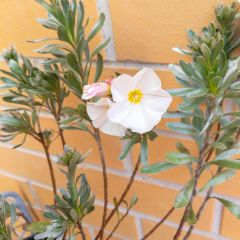
Convolvulus cneorum - Silver bindweed
- Flowering time may to september
- Height at maturity 40 cm
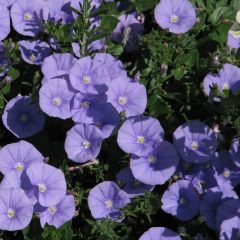
Convolvulus sabatius Moroccan Beauty
- Flowering time july to november
- Height at maturity 30 cm
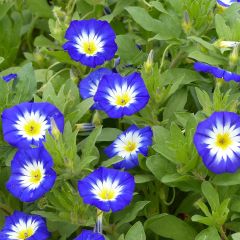
Blue Morning Glory - Convolvulus tricolor Royal Ensign seeds
- Flowering time july to october
- Height at maturity 16 cm
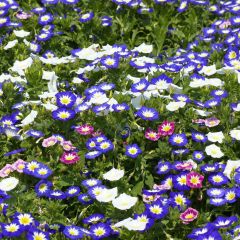
Dwarf Morning Glory Royal Ensign Seeds
- Flowering time july to october
- Height at maturity 40 cm
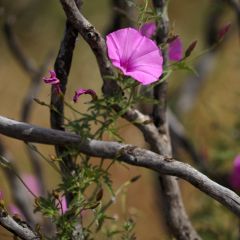
Convolvulus althaeoides
- Flowering time may to october
- Height at maturity 40 cm
Discover other Convolvulus
View All →Available in 1 sizes
Available in 1 sizes
Available in 2 sizes
Available in 1 sizes
Available in 1 sizes
Available in 1 sizes
Planting
Where to plant bindweed or Convolvulus?
Some bindweeds such as Convolvulus cneorum or silver bindweed and Convolvulus althaeoides are relatively hardy and withstand short cold spells (-8 to -15°C). Others, like Convolvulus sabatius or Moroccan beauty are grown as short-lived perennials in southern France, while morning glory or Convolvulus tricolor as an annual in our climates. Most will only survive outdoors in regions where frost is not severe. In less mild regions, bindweed can also be grown in pots or hanging baskets.
Undemanding, bindweed is content with any well-drained soil and a very sunny position sheltered from wind where it will flower more freely. It tolerates drought well and prefers light, stony, calcareous or sandy soil, strictly without excess water. It will not tolerate standing moisture.
With rapid growth and little need for care, bindweed is useful for flowering seaside gardens or holiday gardens without watering.
Bindweed develops into dense, flowering tapetum and forms a bushy groundcover perfect for dry rockery, in large pots, balcony boxes on terrace or balcony, in hanging baskets, over a low wall or in large flowering carpets to punctate path edges, to flower a path and edges of summer bedding.
When and how to plant perennial bindweed?
Plant our Convolvulus perennials as plug plants or in bucket in ground or in a pot, only when risk of severe frosts and extreme heat has passed, from March to May or from September to November. Meanwhile, you can pre-grow them in pots to speed growth in a conservatory or bright greenhouse at temperature above 14°C before placing outdoors.
In ground
Plant approximately 3 to 5 bindweed plants per m2. Space plants 30 to 60 cm in all directions depending on variety. For borders or beds, plant in numbers to obtain a well-flowered, low-maintenance display. In heavy soils, add river sand and compost.
In water-retentive soil, consider planting your Convolvulus in a raised bed or on a mound where water will run off easily.
- Prepare soil with a shallow digging
- Dig a hole 2 to 3 times larger than size of rootball
- Spread gravel or clay pebbles for perfect drainage
- Mix excavated soil with stones and gravel
- Place plug plant in centre of hole, collar level with soil
- Backfill with soil to fill hole
- Firm down
- Water thoroughly
How to plant Convolvulus in pots or hanging baskets
All Convolvulus are perfect in hanging baskets, window boxes, urns or large pots from which they tumble in pretty cascades! In cooler regions, this is even an interesting option. Plant in a rich, well-draining mix composed half of compost and half of river sand.
- Soak rootballs well before planting
- Spread a good drainage layer (gravel or clay pebbles) in pot or window box
- Plant in a mix of garden soil, compost and coarse sand
- Place in sun
- Water abundantly then regularly once soil surface is dry
You will find on our blog all secrets to plant a window box.
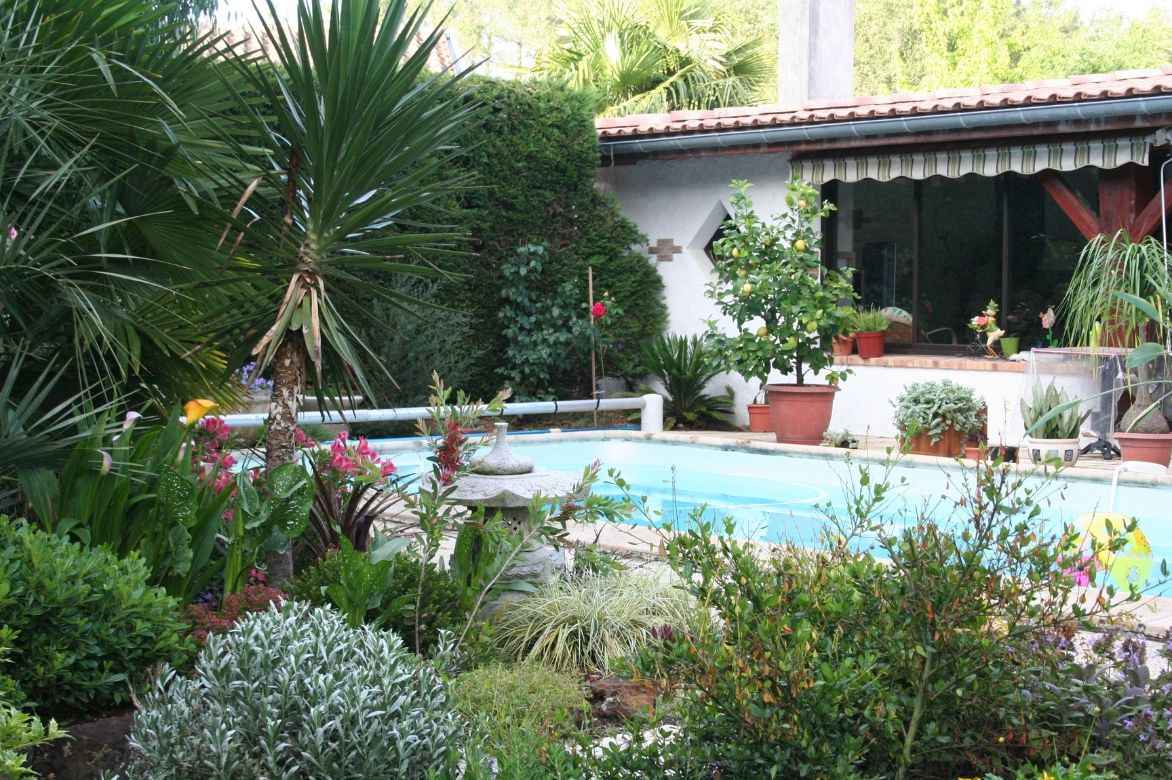
Scene with Convolvulus cneorum showing superb silvery foliage in foreground
You may also read
Ipomoeas: sowing, planting, growing and careSowing
If you already had annual Convolvulus plants, you may have, after flowering, collected the small seeds contained in the dried capsules for future sowing. If not, choose from our Morning Glory seeds and sow in seed trays or seed boxes from March to April, or outdoors in May or June when soil is well warmed and temperatures reach 18–20°C.
In a seed tray
- Soak Morning Glory seeds in water for about 2 hours
- Sow seeds 3 cm deep in a tray filled with potting compost and a little sand
- Keep moist at 20°C until germination, which occurs between 5 and 14 days
- Pot up seedlings individually once they have strengthened, or, if outside temperature allows, plant them in open ground or into larger pots without disturbing the rootball
For sowing in place, from May to June:
You can also sow the Morning Glory seeds directly in situ in warmed soil.
- Loosen soil to a spade’s depth
- Sow in clumps of 4 to 5 seeds in holes the depth of the seeds, spaced every 30 cm
- Cover with a few centimetres of compost
- Firm lightly with the back of a rake
- Keep soil moist until germination, which takes 1 to 2 weeks
- Thin seedlings to leave one young plant every 15–20 cm
To learn all about sowing annual seeds, see our advice sheet: “Sowing annual seeds: how to succeed, in ground or in trays”
Caring for Convolvulus
Once the plant is well established, the Convolvulus requires little maintenance. It is valuable in seaside gardens or where watering is minimal because it tolerates drought very well: water during dry periods, once or twice a week, allowing the soil to dry out well between waterings. In winter, water very sparingly. Avoid excess water and always let the soil dry out between waterings.
Remove faded flowers as they appear using a shear to prolong flowering.
For perennial varieties and in a mild climate, prune clumps lightly at the end of flowering and protect them with a good mulch of dead leaves. In cold regions, perennial Convolvulus can be moved into a frost-free space.
In less favourable regions, pot-grown Convolvulus should be repotted each year. In cold regions, lift the plants of Morning Glories that perish at the first frost.
Potential diseases and pests
Only red spider mites in very hot, dry weather can be a formidable enemy for convolvulus: spray foliage to dislodge them as they hate humidity.
Multiplication
Shrubby or perennial convolvulus are propagated by cuttings from May to July or divided in spring. While Morning glory, Convolvulus tricolor or tricolour convolvulus self-seed every year. Follow our advice above to sow Morning glory seeds correctly.
Division
In March, divide clumps of perennial Convolvulus aged two or three years.
- Lift clump with garden fork
- Separate rootball into several divisions, each with roots
- Replant immediately each new young plant in pot or garden in well-draining soil
How to make a cutting of Convolvulus
- Take non-flowering stem tips about 15 cm long
- Remove lower leaves, keep only 2 upper leaves
- Plant cuttings in very light mix of potting compost and sand, kept slightly moist until rooting
- Place cuttings at 20°C
- Grow in individual bucket protected from frost until following spring
- Plant out in ground after last frosts or into larger pots
Companion plants for Convolvulus
In hanging baskets, window boxes, rock gardens, at edges of beds or borders, Convolvulus adapts to every wish, in ground or in pots, in all natural or naturalistic gardens or romantic gardens, in dry gardens and seaside gardens to contribute to very floriferous displays. With pastel or vivid colours, it allows chic or dynamic combinations.
At the edge of a romantic bed in shades of pink, blue and white, silver bindweed and Convolvulus sabatius will bring a delicate touch at the feet of roses, lavateras, Alcea Rosea or a shrubby Cape mallow, surrounded by yarrow, Agastache, Italian bugloss, dentelaire, Echinops, sea hollies.
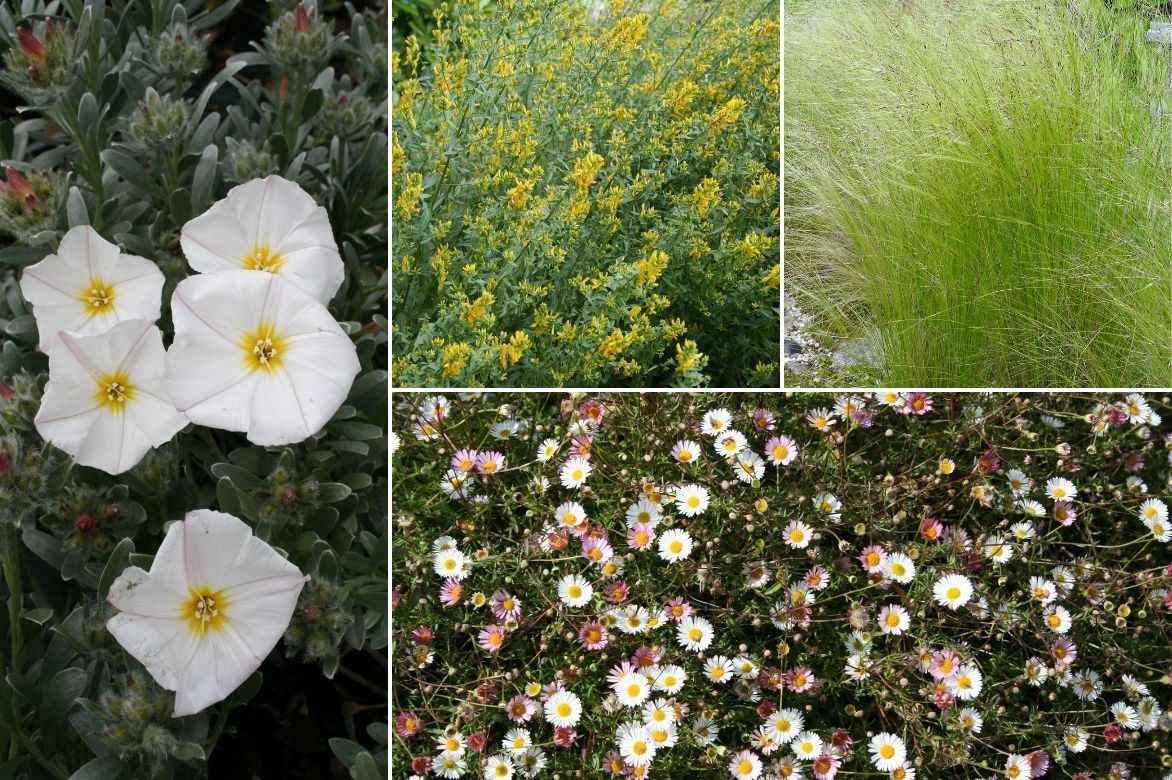
An idea for a sunny embankment combination: Convolvulus cneorum, Genista tinctoria ‘Royal Gold’, Stipa tenuifolia and Erigeron karvinskianus
To compose a grey, downy tapetum, place silver bindweed next to a Cerastium tomentosum (mouse-ear), Anaphalis margaritacea (pearly everlasting), Artemisia and Armeria maritima (sea thrift).
In rock gardens, pair Convolvulus cneorum with plants that enjoy similarly rather dry conditions such as Alpine asters, campanulas, Dianthus deltoides or Dianthus arenarius (sand carnation), helianthemums, Arabis caucasica, Delosperma, bergenias and aubrietias. Accent with a few tussocks of Carex, blue oat grass, Dianthus plumarius, blue fescue.
In a mineral garden, offer silver bindweed Mediterranean perennials such as santolinas, immortelles, rosemary and creeping ceanothus, lavenders, cistus and sedums.
Its flowers in pastel shades will work wonders with purple foliage of Heuchera or glaucous leaves of coquelourdes to create very gentle scenes at the height of summer.
In a bed of summer-flowering perennials, Convolvulus will slip easily between penstemons, airy grasses, perennial flax, nigellas.
In pots and hanging baskets, Mauritanian bindweed and morning glory will form very nice combinations with verbenas, Petunia surfinia, Bidens, Lantanas, zinnias, Diascias in scenes of contrasting or softer colours.
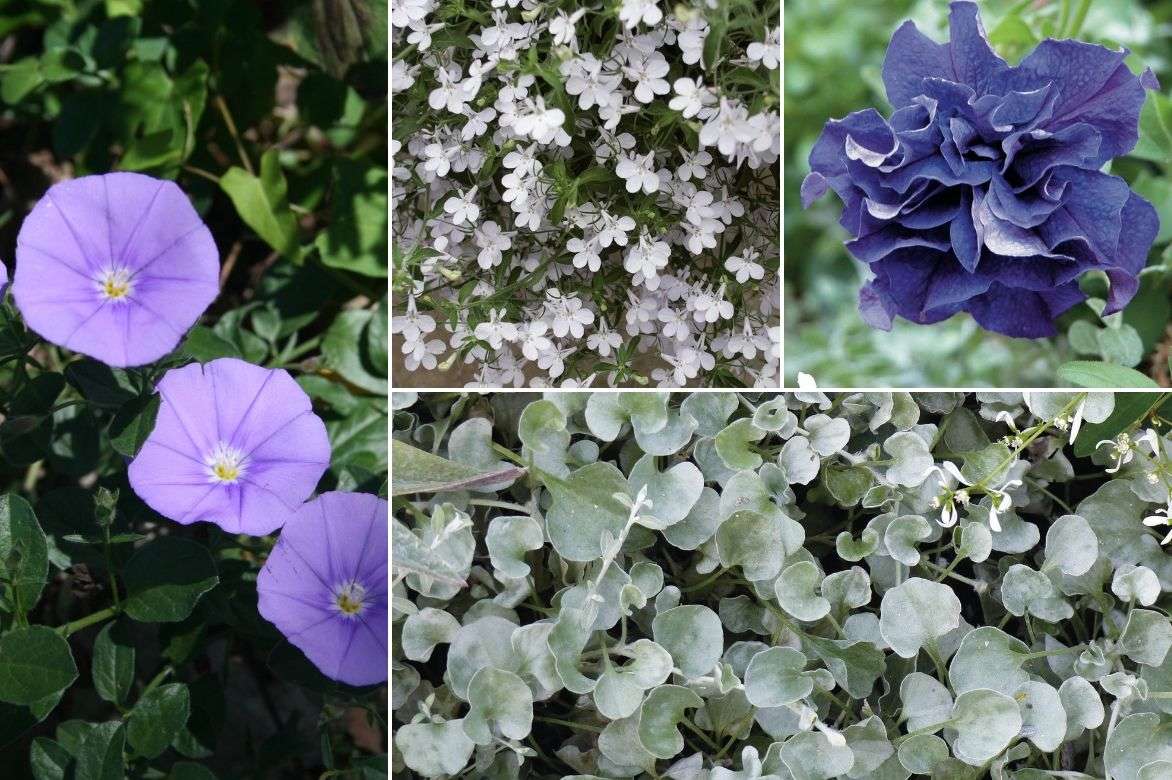
An example of a hanging basket combination: Convolvulus sabatius, Lobelia ‘Snow White’ (or ‘Hot Bavaria’, also very pretty!), Petunia ‘Tumbelina Belinda’ and Dichondra ‘Silver Falls’
In containers, mix them with other annuals such as impatiens, ipomoeas, lobelias and geraniums.
Useful resources
- Discover our tips for pairing convolvulus
- Choose companions for your Belles-de-jour among our unique collection of annual plants
- Discover our best ideas to flower your balconies and terraces
- Annual plants dress the space available to them in a few weeks: discover our ideas!
- What to plant in dry soil?
- Hardy and tolerant of summer drought, discover our sun-loving ground-cover perennials
- Subscribe!
- Contents
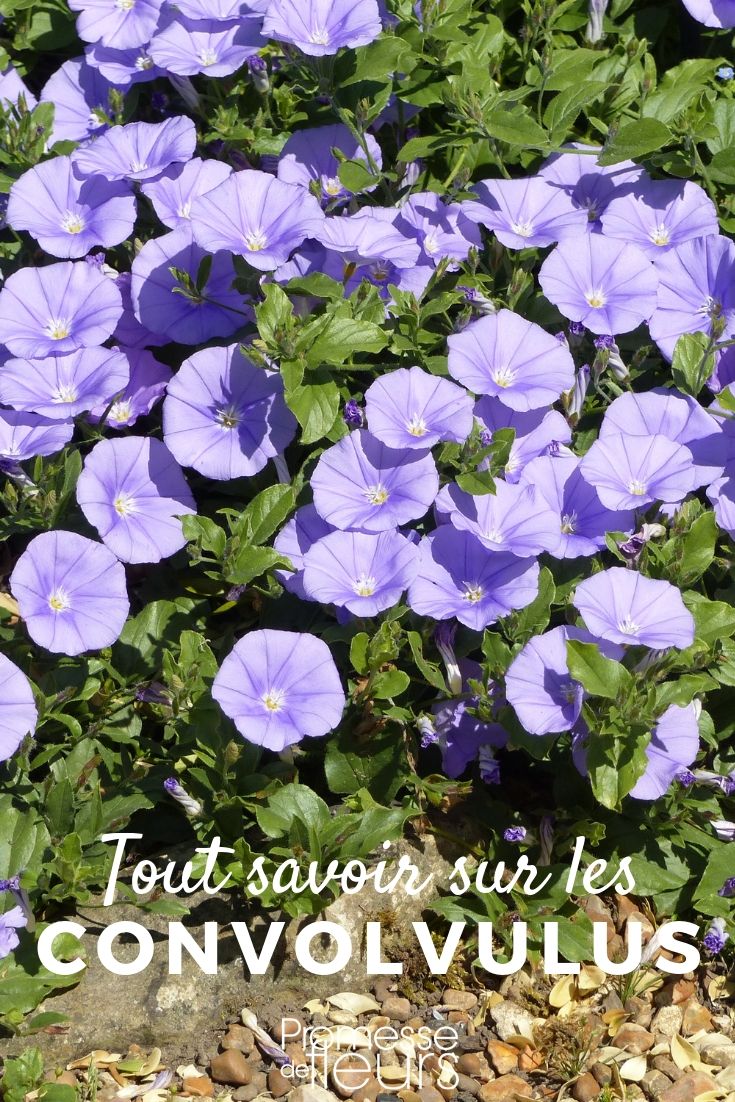































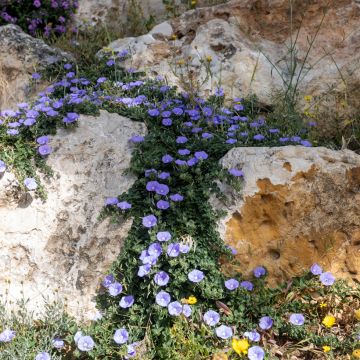
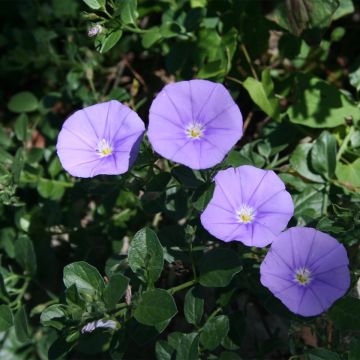


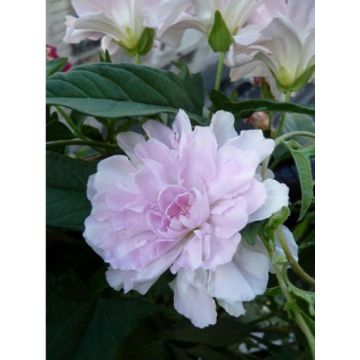

Feedbacks